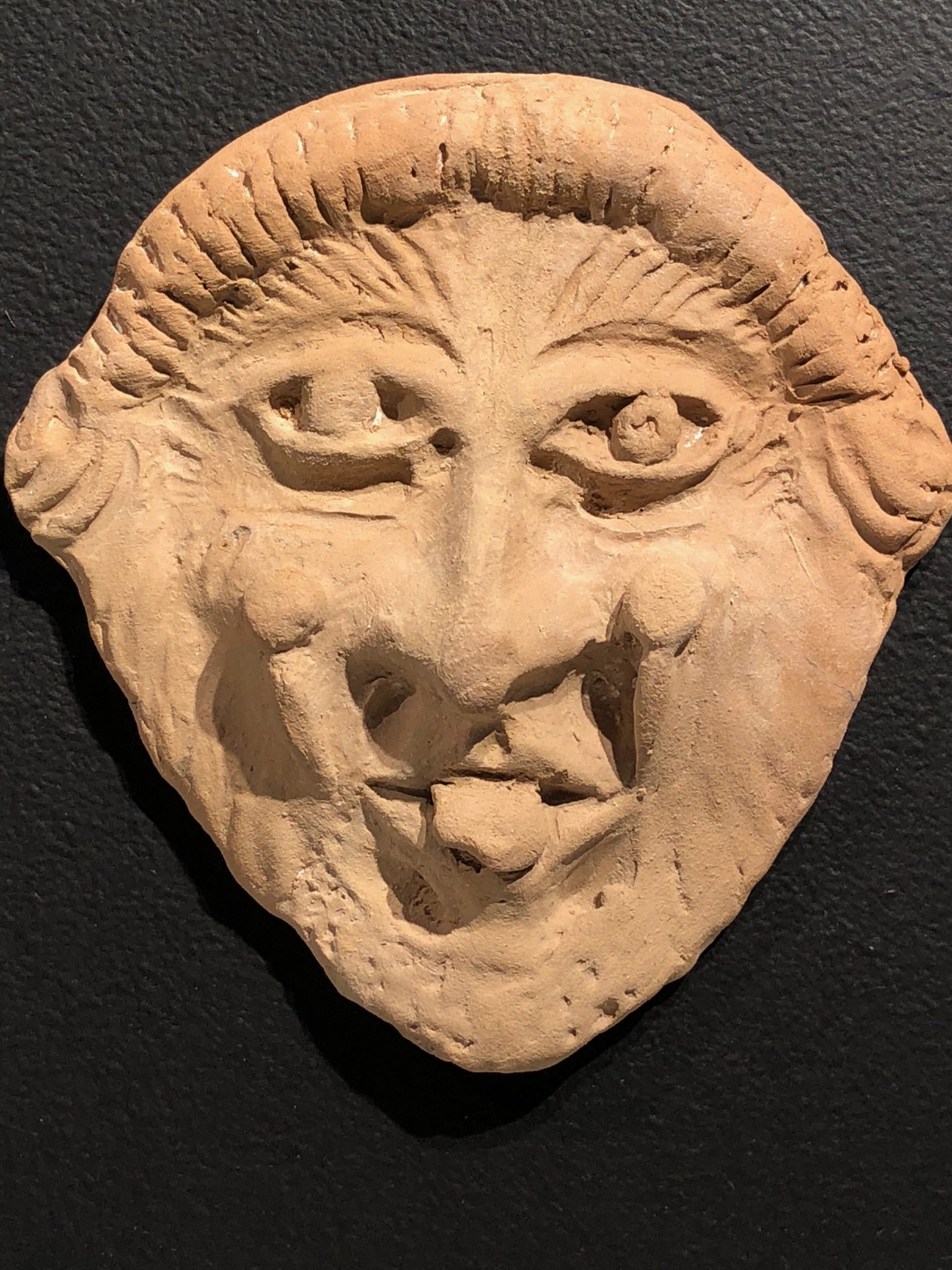
Terracotta
Western Greek, Sicily, ca. 6th/5th century BC
H. 8.9cm
A rare and amusing pinax of an animalistic Gorgon with large eyes and facial features. Gorgoneion pinakes served as votive objects deposited in a sanctuary or affixed within a burial chamber. This unusual presentation will certainly radiate its apotropaic properties when needed.
Condition: Put together from 4 fragments, but complete. Joints invisible
Provenance: ex. property of Mr. M. Q.-F, Horgen, Switzerland, since 1971
A Gorgoneion is a protective symbol in ancient Greek art that depicts the head of the Gorgon, a mythical creature with snakes for hair and a terrifying gaze that could turn people to stone. The Gorgoneion was believed to have the power to ward off evil and protect the person who wore it or displayed it.
The image of the Gorgoneion was often used as an apotropaic symbol, meaning it was used to ward off evil or bad luck. It was often depicted on shields, armor, or even as an architectural feature on buildings. The symbol was also sometimes used in jewelry, such as amulets or pendants, and was believed to bring good luck and protection to the wearer.
The most famous depiction of the Gorgoneion is probably the one on the aegis, a shield or breastplate worn by the goddess Athena in Greek mythology. The Gorgoneion was placed at the center of the aegis, and it was believed to give the goddess the power to terrify her enemies and protect her allies.
Item reference: CL1467
